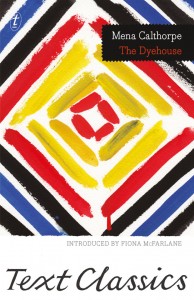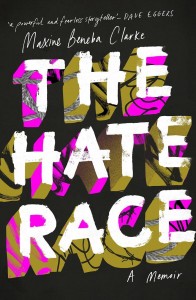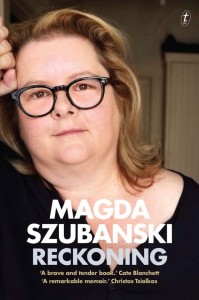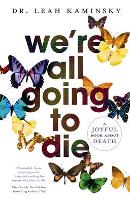Although August is traditionally quiet in Literary-Classics land, the AusLit community has been busy with festivals galore, including the popular Byron Bay Writers Festival, the revamped Canberra Writers Festival, and of course the Melbourne Writers Festival. Women writers like Charlotte Wood and Magda Szubanski featured at two or more of these festivals, and the invigorating American writer Lionel Shriver was a key speaker in Melbourne. I attended the Canberra Writers Festival. What a thrill it was to have a festival in our capital city again, after a hiatus of over a decade. Did you get to any of these festivals, and if so, we’d love to hear your highlights.
Oh, and of course, the Miles Franklin Award winner was announced in August. There were four women writers in the shortlist, but the winner was male writer AS Patric’s acclaimed Black rock white city. A worthy winner I believe.
Achtung, August!
Our August review figures were somewhat down on recent years – just 20 instead of the high twenties – but the important thing is that the reviews are still coming. Of course I can talk, as my reviewing was very desultory this month, so I did little to improve the situation. Anyhow, here are some highlights:
- Top reviewer award this month goes to Jonathan Shaw (Me Fail? I Fly!) who posted three reviews. Carolyn, Jennifer Cameron-Smith, Janine Rizzetti (Resident Judge of Port Phillip) and Kim Forrester (Reading Matters) were just behind him with two reviews each.
- The most reviewed book, and author, this month was The natural way of things by Charlotte Wood, with two reviews.
- Eight (that is, 40%) of this month’s reviews were for non-fiction books, five being in our History, Memoir, Biography category.
The Classics
 No classics were reviewed this month, so I’ll take this opportunity to discuss Text Publishing’s publication of its 100th Australian Classics title in August. It was by a woman, Mena Calthorpe’s The dyehouse. Originally published in 1961, it belongs to the tradition of social realist novels – which is not surprising, given that Calthorpe was a member of the Communist Party in the 1950s, before joining the Australian Labor Party. She was also secretary for a while of the “leftist Australasian Book Society” (from Fiona McFarlane’s intro). Her novel is set in a textile factory, and I’m looking forward to reading it.
No classics were reviewed this month, so I’ll take this opportunity to discuss Text Publishing’s publication of its 100th Australian Classics title in August. It was by a woman, Mena Calthorpe’s The dyehouse. Originally published in 1961, it belongs to the tradition of social realist novels – which is not surprising, given that Calthorpe was a member of the Communist Party in the 1950s, before joining the Australian Labor Party. She was also secretary for a while of the “leftist Australasian Book Society” (from Fiona McFarlane’s intro). Her novel is set in a textile factory, and I’m looking forward to reading it.
The Text Classics list contains an impressive and diverse selection of Aussie classics – some many decades old and others “newer” classics, some fiction and some non-fiction, some by women and some by men. They are priced reasonably (mostly $12.95), have beautiful covers as you can see here, and include introductions by well-chosen writers and commentators. If you haven’t checked them out, do …
Non-fiction – History, Memoir, Biography AND Other!
With non-fiction featuring significantly in this month’s collection of reviews, I figure they deserve a little wrap. Of course, Brona mentioned some of them in her History, Memoir, Biography round-up earlier this week, so I’ll try not to go over too much of her ground. Several of the books were tagged with our “indigenous issues” and/or “diversity” descriptors. They include Maxine Beneba Clarke’s cleverly titled The hate race, Liz Connor’s Skin deep, and Magda Szubanki’s Reckoning.
 Brona herself reviewed The hate race. It’s a passionate, personal review which demonstrates how one person’s story can resonate through different people’s lives and experiences, and find sometimes unexpected connections. Janine (Resident Judge) reviewed Skin deep, which is subtitled Settler impressions of Aboriginal women. It’s a scholarly book – and is confronting, Janine writes, in its fearless willingness to interrogate “colonial racism and gender relations”, and how misogynistic and derogatory attitudes towards indigenous women “depended on the facility of print to reiterate and thereby entrench meaning as truth” (Connor’s words). Reckoning was Janine’s second review this month. She writes:
Brona herself reviewed The hate race. It’s a passionate, personal review which demonstrates how one person’s story can resonate through different people’s lives and experiences, and find sometimes unexpected connections. Janine (Resident Judge) reviewed Skin deep, which is subtitled Settler impressions of Aboriginal women. It’s a scholarly book – and is confronting, Janine writes, in its fearless willingness to interrogate “colonial racism and gender relations”, and how misogynistic and derogatory attitudes towards indigenous women “depended on the facility of print to reiterate and thereby entrench meaning as truth” (Connor’s words). Reckoning was Janine’s second review this month. She writes:
The question of what her father had actually done as a teenager assassin the Polish Resistance is the thread that draws the reader through this story, as well as a count-down to her coming-out to her family and the wider public. I must confess a shifting discomfort with the child exposing her parent like this.
 She goes on to discuss the ways we fashion our sense of selves (which for some generates an exposure of our parents) and wonders whether this practice of exposure relates to the decreasing value we place on privacy in our social media world. Good question. Early in parenthood, I prepared myself for exposure of my weakness and failings. Of course some exposure can be more public – in books, for example – than others, but my hope is that those to whom the exposure is made, whether in public or private, will be generous and open-minded, rather than judgemental, in their response. What do you think about this fairly common aspect of memoirs? Overall, though, Janine found the book “engagingly written, honest and human”. In other words, despite her questions, she enjoyed the read.
She goes on to discuss the ways we fashion our sense of selves (which for some generates an exposure of our parents) and wonders whether this practice of exposure relates to the decreasing value we place on privacy in our social media world. Good question. Early in parenthood, I prepared myself for exposure of my weakness and failings. Of course some exposure can be more public – in books, for example – than others, but my hope is that those to whom the exposure is made, whether in public or private, will be generous and open-minded, rather than judgemental, in their response. What do you think about this fairly common aspect of memoirs? Overall, though, Janine found the book “engagingly written, honest and human”. In other words, despite her questions, she enjoyed the read.
One of the “Non-fiction, Other” books, was Helen Garner’s Joe Cinque’s consolation, about the incomprehensible murder, by heroin, of Joe Garner by his girl-friend Anu Singh. It was reviewed by Carolyn, who liked the book. Garner, she writes
takes us carefully through the events leading up to Joe’s death and the following trials, all the time asking questions about ethics and the law. She has no answers for us but has given us much to think about.
This and The first stone established Garner as one of Australia’s significant exponents of the creative non-fiction form.
 For my last example here, I’ll share something lighter, Tracy Sorenson’s review for The Newtown Review of Books of Leah Kaminsky’s We’re all gong to die. Sorenson enjoyed the book, describing its value in the following words:
For my last example here, I’ll share something lighter, Tracy Sorenson’s review for The Newtown Review of Books of Leah Kaminsky’s We’re all gong to die. Sorenson enjoyed the book, describing its value in the following words:
The silence and awkwardness surrounding death has important consequences. It means we risk failing to connect emotionally with the dying. Our own lives are thus impoverished, missing the richness available in those connections. It means that we spend ridiculous amounts of money on medical treatments for those who will shortly die no matter what we do. It means we often go to the grave without making the practical arrangements that would head off a lot of confusion and heartache.
It’s all difficult stuff, but this eclectic tour of the territory is not without humour and even – as boldly promised on the cover – a good dose of joy.
As one currently involved in managing the estate of my aunt who went to her grave without finalising the necessary practical arrangements, I urge you to make them now (no matter how old you are. It’s never too soon … but it can very easily be too late! End of lecture!)
A Twentieth Century Contribution
 The rest of the reviews ranged across the usual suspects – general fiction, historical, a couple of other genre books. All were published in the 21st century with just one exception, Colleen Z Burke’s Home-brewed and lethal, which was reviewed by top reviewer this month, Jonathan Shaw. Those of you who read Jonathan’s blog won’t be surprised to hear that this is a book of poetry. It’s the seventh of Burke’s eleven collections and was published in 1997. It is also, Jonathan writes,
The rest of the reviews ranged across the usual suspects – general fiction, historical, a couple of other genre books. All were published in the 21st century with just one exception, Colleen Z Burke’s Home-brewed and lethal, which was reviewed by top reviewer this month, Jonathan Shaw. Those of you who read Jonathan’s blog won’t be surprised to hear that this is a book of poetry. It’s the seventh of Burke’s eleven collections and was published in 1997. It is also, Jonathan writes,
autobiographical [in] nature: memories of a Catholic girlhood, reconnection with an Irish heritage, defiant feminist rage, marital woes, then – taking up where the memoir ends – the joys and burdens of motherhood, the flavours of inner-city living, environmental and Aboriginal politics and history and, like a punch in the guts, half a dozen poems written in the heat of bereavement …
I guess a lot of poetry can be, but some, we could say, is more autobiographical than others! I know many people are a little scared of poetry, fearing it might be inaccessible. Shaw implies, in his conclusion, that this is unlikely to be one of those. He says:
I think it’s fair to say that Colleen Z Burke’s poetry aspires to, and generally reaches, a bullshit-free zone. No traditional forms, no high rhetoric, no decorative figures, but straight talk that nevertheless bends and twists and even smiles between the lines.
Certainly the examples he provides supports this view. It looks like one I’d enjoy.
Meanwhile, what did you read in August?
———————
About Me
I am Whispering Gums and I read, review and blog about (mostly) literary fiction. It was reading Jane Austen when I was 14 years old that turned me on to reading literary fiction/classics, which is why I am here today doing this round-up! Little did Jane know what she started!
My love of Aussie literature started with Banjo Paterson’s ballads and Ethel Turner’s Seven Little Australians in my childhood. But, I didn’t really discover Australian women’s writing until the 1980s when I “met” and fell in love with Elizabeth Jolley, Thea Astley, Olga Masters, Helen Garner and Kate Grenville. Ever since then I have been making sure to include a good percentage of Australian (and other) women writers in my reading diet.






Thank you Sue for a wonderful and succinct roundup. Lucky you getting to the Canberra Writers Festival. I have still yet to attend one.